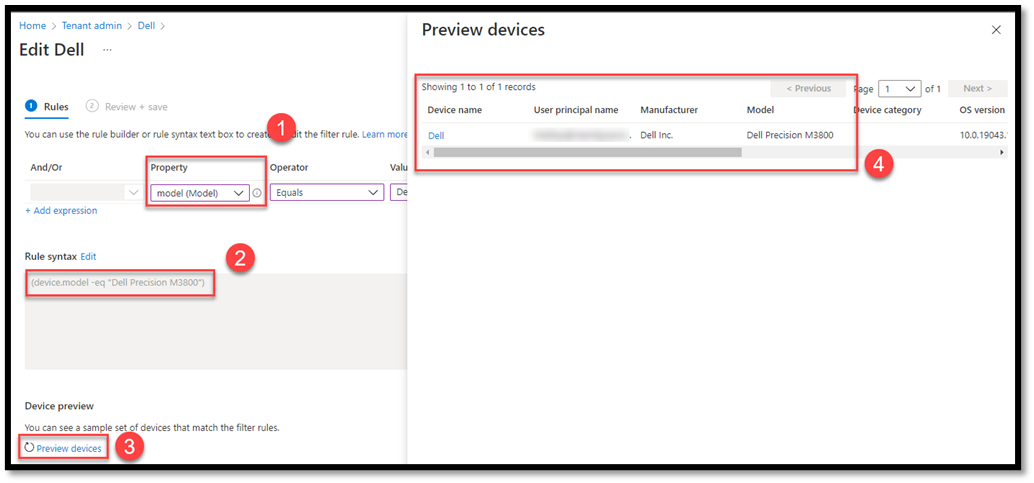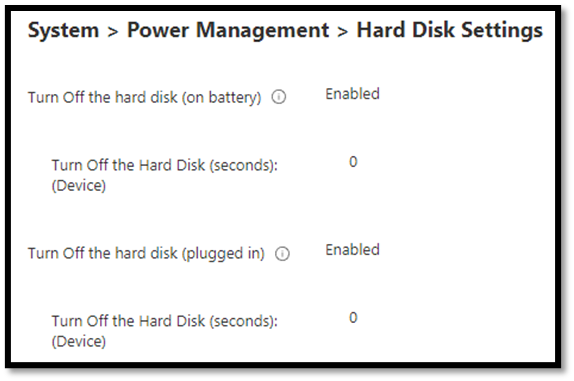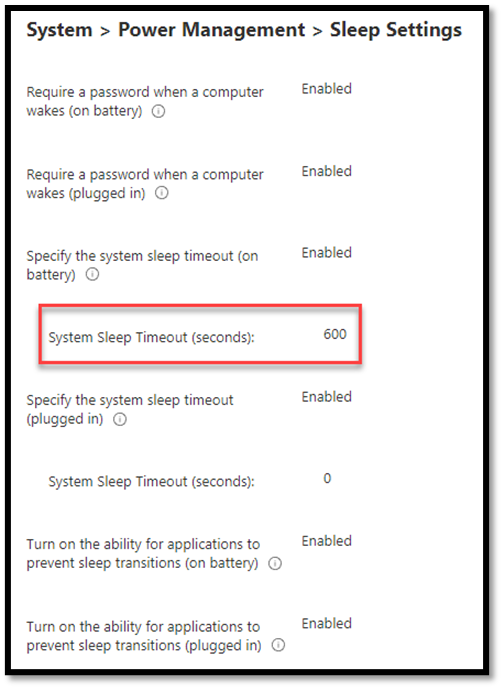Introduction
I have a customer that currently uses Configuration Manager to manage their devices. They have a wish to remove Configuration Manager and go to cloud only management. In this regards they have a lot of GPOs we will need to analyze in order to move to production and fully cloud management
One of the GPOs contains power management settings to provide a certain user experience when e.g., closing the lid while the device is docked.
I have researched the web and did not find any good blog on this area, why I decided to create one for this special purpose.
Ask yourself: “Should I set power management settings just for the fun of it?”
NO, if you do not have any deviations from the standard which already are fit for laptop users, then do not touch power management. However, if you have some behavior you want to change, then this post will help you to find settings and a recommendation where to set them.

Requirements
- Microsoft Intune
Set a goal before proceeding
Do you have desktops and laptops?
Desktops are static and will stay at the office or at home. Before doing anything to these kind of devices, think “is this really necessary?” If yes, then proceed. Most likely they will need a separate profile. In Configuration Manager when we wanted to discover Desktop vs. laptop, we typically asked WMI for “Chassistype” in the class Win32_SystemEnclosure. It would be great to have such option in filters in Microsoft Intune.
While we do not have a filter to do the same, we can filter on property “Model” and add the models you have in your environment that you know are either Desktop or Laptop.
Here is an example to make a filter for laptop

Should the users be able to change power settings by themselves when manage them through Intune?
If the answer is no.
In settings you think you can change it but if you have set e.g., screen timeout then you will be disappointed as it will revert back

If the answer is YES, then you need to find another solution to add your settings than using configuration profiles. Well, basically this is pure registry on a device, so you can do whatever you like, but I normally tend to keep the configuration as simple as possible and use the built-in mechanisms.
Does Microsoft have some best practice?
Yes, they have. Kenneth Van Surksum pointed me in the direction of Windows 10 update baseline which contains some power settings:
Download Windows 10 Update Baseline from Official Microsoft Download Center

If you want to set these settings in Intune, you can go to Kenneth’s blog and see how that is done using “Device Restriction” Configuration profile.
My customer wanted to have specific power settings to their laptops when plugged in to power.
This is the table of high-level settings:
Table 1
On battery:
| Description | Action |
| Close lid | Sleep |
| Power plan | Automatic |
| Turn of screen | 5min |
| HD sleep | Off |
| Sleep | 10min |
On AC (Power):
| Description | Action |
| Close lid | NO Sleep |
| Power plan | Automatic |
| Turn of screen | 5min |
| HD sleep | Off |
| Sleep | Off |
Where do I setup the policy?
During the time Intune have been around, we have been given different options to configure these settings. I will list in a prioritized order where I would configure these settings:
- Settings Catalog
- Administrative Templates
- Device Restrictions (limited control)
Using settings catalog, you will get the benefit of much better reporting. This is the future, so try to use it as much as possible. Another benefit is that Settings Catalog settings can be duplicated, so once you have setup your configuration and need to change a bit, you can store the old configuration for either documentation or backup, while using the new to assign to your devices.

You will find the settings beneath, configuring the high-level settings from table 1





Sander Rozemuller and I wrote a post together on how to automate the setting import into your environment.
You can visit his blog post here
Summary
Power Management through Microsoft Intune is easy configurable but that does not mean you have to do it. We are in the modern world where we should only configure the most important settings rather than configure and micro manage our devices.
Happy testing!
Thank you all who contributed to the twitter thread. You can read it here
Mattias Melkersen is a community driven and passionate modern workplace consultant with 20 years’ experience in automating software, driving adoption and technology change within the Enterprise. He lives in Denmark and works at Mindcore.
He is an Enterprise Mobility Intune MVP, Official Contributor in a LinkedIn group with 41.000 members and Microsoft 365 Enterprise Administrator Expert.
Mattias blogs, gives interview and creates a YouTube content on the channel "MSEndpointMgr" where he creates helpful content in the MEM area and interview MVP’s who showcase certain technology or topic.
Official Contributor here "Modern Endpoint Management":
https://www.linkedin.com/groups/8761296/














